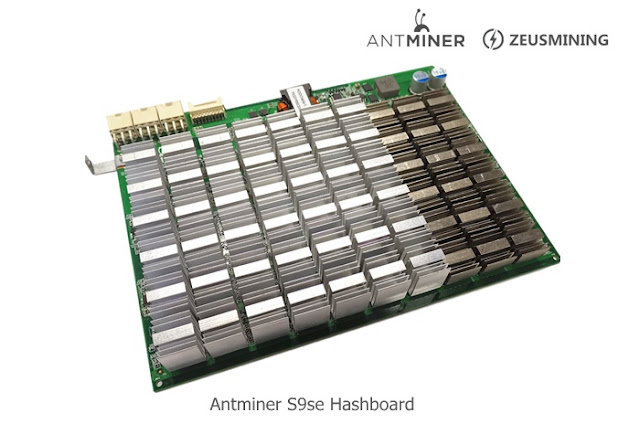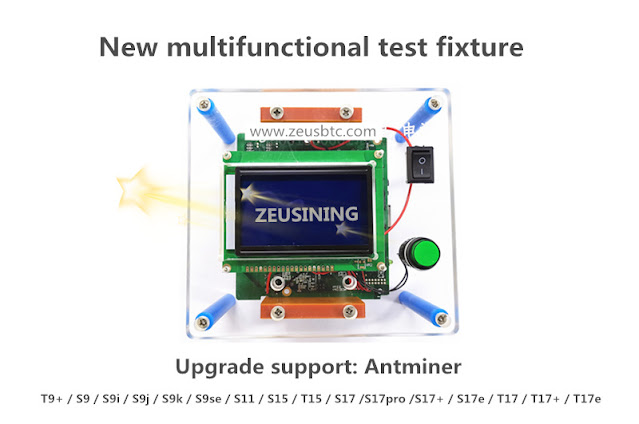How to repair ASIC miner hash board
One ASIC miner consists of 3 to 5 Hash board, a control board, a casing, and software,
among which the Hash board are easiest to broken. because
the ASIC bitcoin miner hash board consists of many serially connected ASIC
chips. When they work, they will be in a high-temperature environment for a
long time. In this environment, it is easy to burn the chip or scatter the
solder due to high temperature which makes the hash board or the mining machine
unable to work and no hash rate.
How to quickly detective which chips broken it’s the most important when we repairing ASIC miners
The Antminer chips fixture fast efficient and easy to use Bitmain Antminer repair inspection tool
The ASIC bitcoin miner hash board consists of many serially
connected ASIC chips. When they work, they will be in a high-temperature
environment for a long time. In this environment, it is easy to burn the chip
or scatter the solder due to high temperature which makes the hash board or the
mining machine unable to work and no hash rate.
In the practice of Hash board repair, the most difficult thing
is how to accurately find the damaged ASIC chip, because the chip is usually
located under the heat sink and impossible to observe with our eyes, so we can
only rely on equipment for detection.
In the past when people who offering Antmienr repair service to test and read via waveforms to judge chips damaged or not. But this method needs professional electronic knowledge or you will see it's very hard. Even you are enough professionally but the accuracy of this method will produce some errors and hard to founding damaged chips.
Antminer hash board tester - Antminer chips
fixture comes out
To better simplify the operation process and improve work
efficiency, a Chinese company has developed a professional Hash board
inspection tool called Antminer chips fixture or Antminer test fixture or
Antminer tester. It completes the detection work by scanning the chips of the
entire hash board, with simple operation and high precision.
The test result will be directly displayed on the computer
screen and the status of the hash board can be understood more intuitively,
including the number of chips, hash rate, temperature value, calculation of the method, and other parameters.
If the chip on the Hash board is bad, the test fixture will stop
sending signals when scanning the chip and prompting the chip number. Next, we
only need to test the voltage and resistance of the chip with a multimeter to
determine whether it is damaged, and then replace it.
How to use Antminer chips fixture to lock the
damaged chips
let's start with the ASIC miner Antminer s9 hash board for an
example. Before starting the test, we need to install the USB driver and test
software on the computer. Then connect the USB interface of the test fixture to
the computer and perform the correct port configuration. After completing these
steps turn on the power to the test fixture. At this point, the computer screen
will show some progress. This is the self-check procedure of the test fixture.
The Hash board can only be tested after the self-check is completed.
When testing the Hash board, we need to connect the 12V power
supply to it then connect the data cable of the chips fixture to the Hash board
then press the "Test" button of the test fixture to start testing. At
this time, will display the test progress and display key parameters on your
computer screen. usually, the test process runs to the end and displays 2-3
"OK", it means that the Hash board can be work and chips not damaged.
In the testing, if you saw "No Hash Board" on the
computer screen, it means the test fixture cannot recognize the Hash board. Please
check the connection of the data cable and power input. If the above two points
are normal, you need to use a multimeter to check whether the voltage of the
hash board voltage is normal and whether the voltage of the MOS chip is normal.
If the computer screen prompts "0 chips detected", it means that the
chip has not been recognized, please check the first and last chip, because
these two chips are responsible for the initial signal transmission and signal
return when one of them has a problem. When this happens, there will be no
signal on the entire Hash board. If the chip number is prompted on the computer
screen, such as "23 chips detected", it means that the 22nd chip has
problems. This is due to the signal sending direction. When the 22nd chip is
damaged, the detection signal will stop between the 22nd and 23rd chips, so the
test fixture will prompt 23 errors. It is recommended to use a multimeter again
to check the voltage and resistance of the 22nd chip and determine whether it
is damaged. This situation is very common.
Huge demand and high profit
Once you have mastered how to repair the hash board, you can open a store and offer Bitmain miner repair local repair services. Like the united states, the Antminer repair service is very popular. When you mastered this skill you will get a high profit.
More Antminer parts and hash board repair tools recommend when we repairing Antminer ASIC miner:
1. Antminer Hash board
2. Antminer test fixture
3. Antminer hash board code editor
4. ASIC chips
For more parts and tools you can visit the ZEUS MINING website
Notice
When we tested different hash boards, the TF card of the
Antminer test fixture needs to be replaced. TF cards have different types of
built-in test files, and the basic files for running test programs vary from
chip to chip. For example, the architectures of 1387, 1396, and 1397 chips are
different, so they will have three versions (that is, three conversion files).
When testing the Hash board of
different chips, you need to refresh the corresponding conversion file in
advance, and then insert the test file of the matching TF card.



Comments
Post a Comment
Tell us your opinion